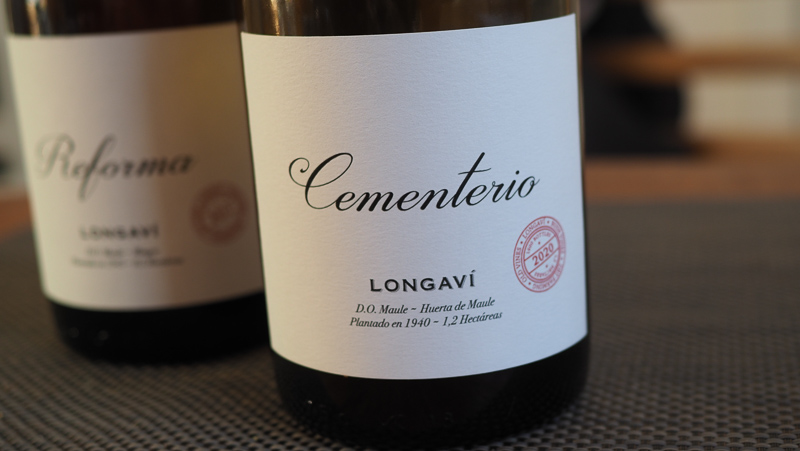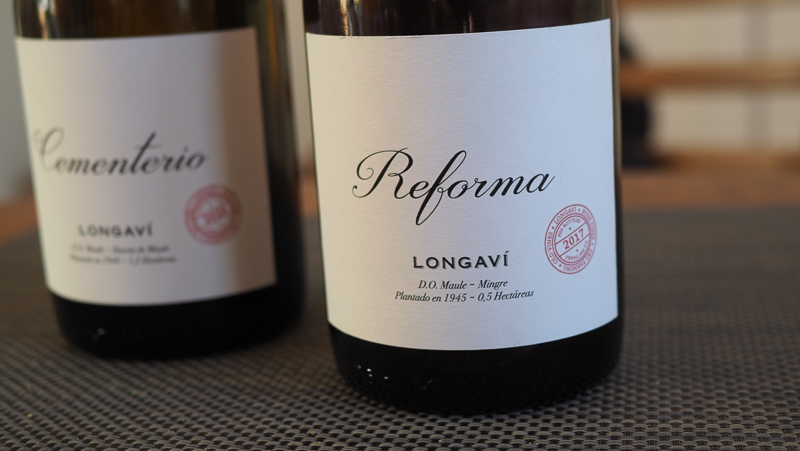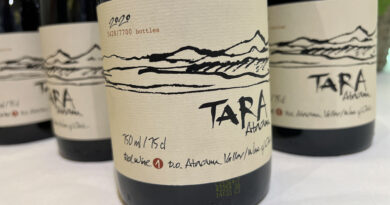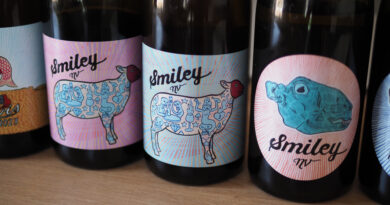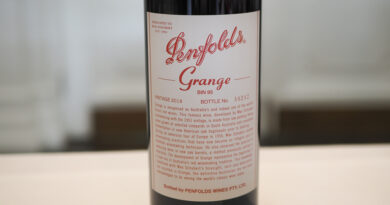New Wave Chile is here, with a little help from South Africa: the wines of Longavi
Inspired by the Swartland Revolution, three men have started a cross cultural company making low intervention wines from old vines on both continents. Lisse Garnett reports.
A glut of ancient vines, insane terroir, cheap labour and a stable economy are propelling Chile to the forefront of a movement that offers low intervention wines with a fine wine edge.
Chile has always looked beyond its borders for inspiration, something that’s evident in the creation many a fine wine facsimile from her shores. Today this super-slim country with a 4000 mile long seafront has woken up to the possibilities of producing wines with a sense of place. And there’s a parallel here with the new wave wines coming from South Africa.
Longavi is a label with two Chileans and a Saffer at the helm. Julio Bouchon and David Nieuwoudt have partnered up to produce some ridiculously good natural wines, from vines grafted onto the roots of dry farmed octogenarian Pais. Nascent rockstar winemaker, Christian Sepúlveda is the third partner: he has also shown himself to be a skilled viticulturist, and is unafraid of using ancient grafting techniques, flor, amphora and concrete in the winery.
Julio and David were born in the same year to multigenerational, long established wine families – Bouchon Family Wines and Cederberg. These two old friends from different continents met when Julio’s father Don Julio took a shine to David’s Sauvignon at the London Wine Fair, practically drinking his stand dry. Today they are thinking local, producing wine from old vines in both countries, utilising local labour and leasing long forgotten vineyards to breath life into lost communities.
Lisse Garnett spoke to David as he sat protected from the hot South African sun by a beautiful ancient vine pergola on his terrace overlooking the mountains. Tanned and smiling, he looks a very blessed man, a man who has been nowhere for two years.
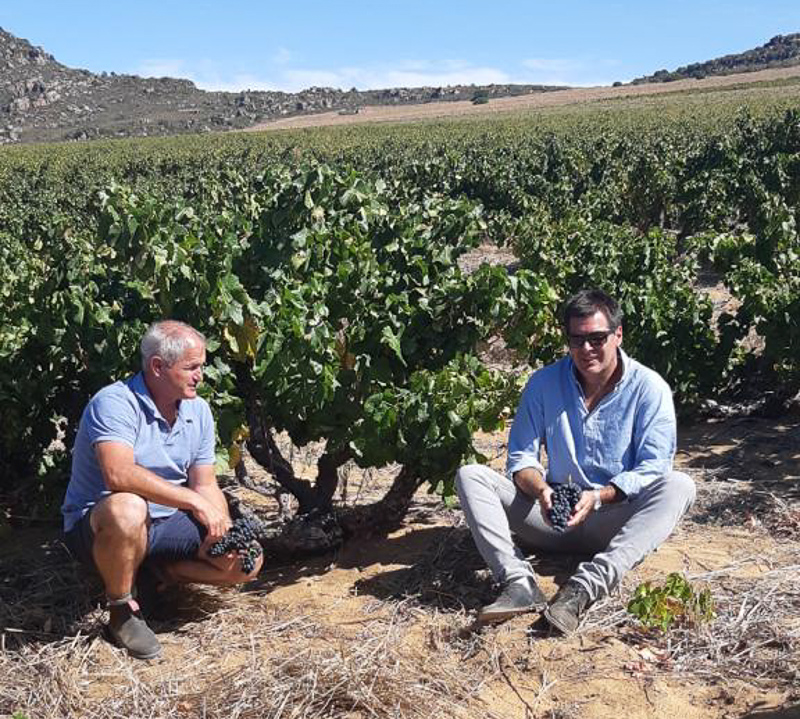
Lisse Garnett (LG): What do an ageing Chilean Don and the scion of a top tier 6th generation Saffer winery have in common?
David Nieuwoudt (DN): I met Don Julio (Julio Bouchons father) whilst manning my stand at the London Wine Fair some twenty years ago.
He was my best Sauvignon Blanc client. We would close down at 6 o’clock but I had run out of wine by the second day because he would finish a bottle and a half or two bottles in a day. We were one of the first wineries to start this reductive style of winemaking in South Africa and he loved it – I told him you obviously don’t make this style in Chile.
Then I became very close friends with his son Julio. We are the same age and they were going through a big restructuring at their winery, away from the commercial mass produced Chilean stereotype, moving towards smaller productions and less intervention. We decided to do something together. The old man is very strict and the next generation wanted a new direction, to go back to the family roots and start prioritising site. They have all these beautiful vineyards.
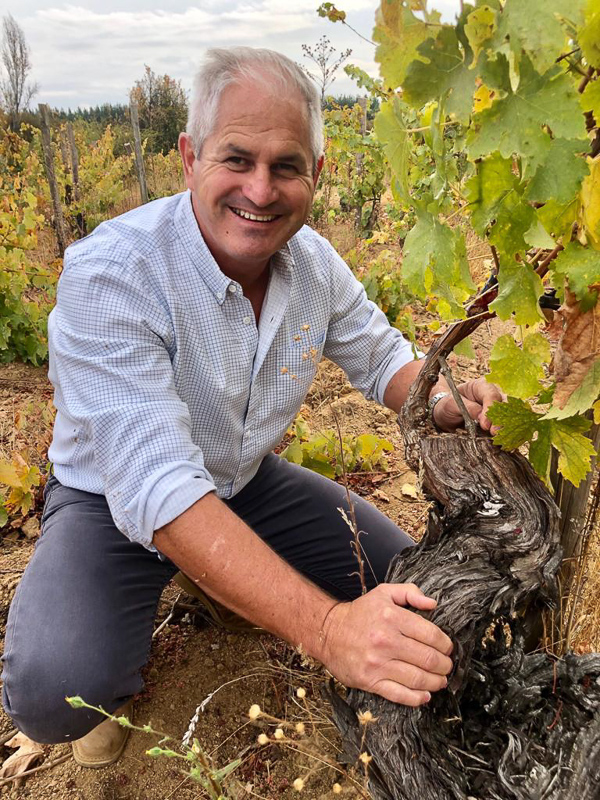
The Chilean way has traditionally been all about volume – you don’t ask a Chilean how many pallets or bottles he exports but how many containers. It was all about volume – a different mindset. It was very successful but we wanted a more organic feel, hands off winemaking. Minimum intervention but smart wines, wines that are technically correct. (In South Africa we have a common fault with H2S in Sauvignon blanc – they think it’s a wine style but it’s a fault.)
The idea behind this new project is to produce seriously hands off wines from seriously old vineyards down in the south, trying to preserve some of these vineyards – trying to get long term contracts with them, to push the boundaries and start making wine as they were doing 8000 years ago in Georgia.
We wanted a younger approach – we wanted a younger audience.
LG: How did you begin?
DN: We started out with the Chenin project – we wanted to make the first real commercial kick-arse Chenin in Chile. The only way we could do it was to find seriously old spots; Julio had travelled to South Africa and been inspired by the old vines we have there. We found this amazing property very close to their cellar where we had the opportunity to bring life to this old Pais vineyard. At the beginning when we grafted people were laughing their heads off at us – look at this south African guy, he is coming to Chile and he is trying to graft it onto 105 year old dry farmed Pais – he has no water, he must be crazy. Bahahaha..
But it was a super success. These new Chenin grapes that we get from these vineyards are on a different level, stuff that I would struggle to get in South Africa.
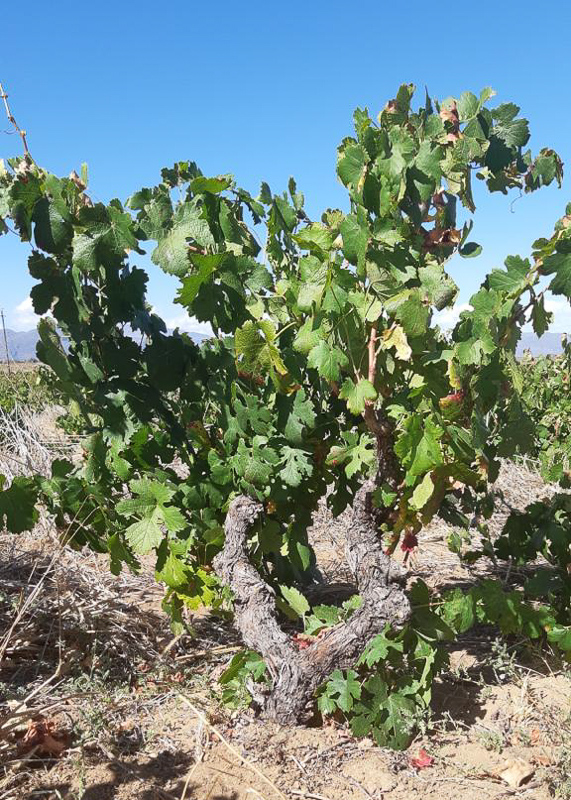
One of the vines in South Africa 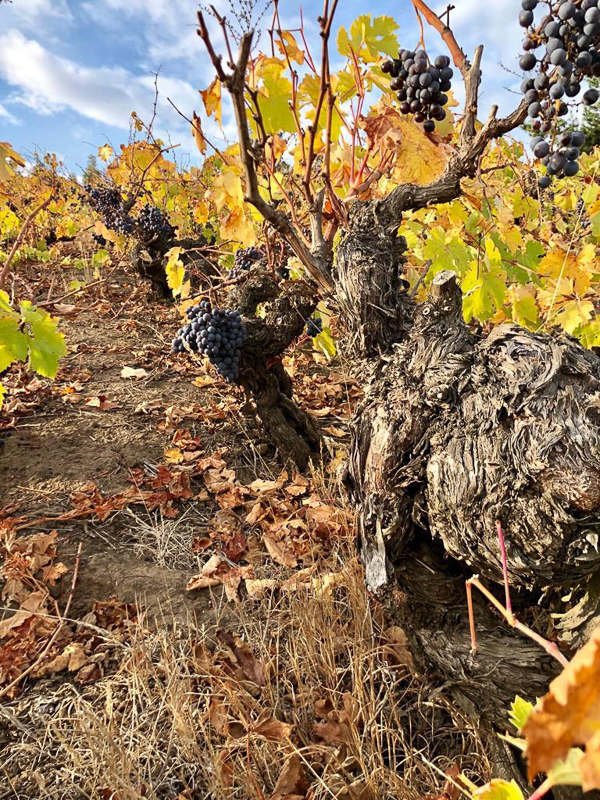
Old vines in Maule 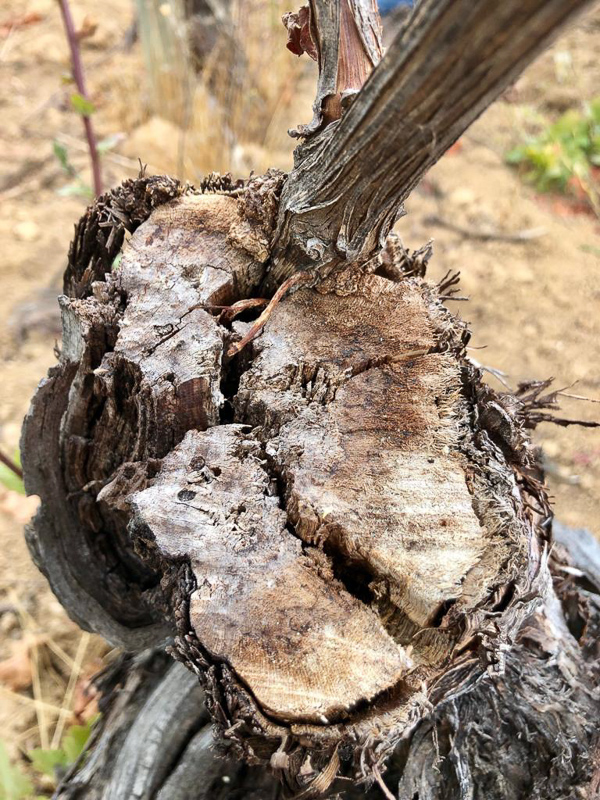
A cleft graft in an old Pais vine
LG: Is this a well known technique?
We found an old guy in the village with horses – he knows how to farm dry vines. He knew about grafting, amazing, he just had it between his fingers and we had over 90% success rate. People thought we were crazy, cutting 100 hundred year old vines and grafting them but the next year there was life in this vineyard.
So we’ve managed to get about 3 hectares of it now and then to seriously produce Chenin with a natural ferment in clay amphora. We burnt our fingers a little bit in the first year, too ambitious with the skin fermented one but we got it right very quickly in the second and the 2020 vintage – well that’s an amazing wine.
LG: Which other varieties do you work with?
There are all of these phenomenal Cinsault vineyards in Itata Valley, and we found one, also 100% organic, it’s farmed by a father and son. If you see these guys working, it’s utterly incredible, they still do every single thing by hand, they’ve just got 4 hectares! They haven’t even got implements, it’s incredible they farm in an unchanged way as they have done for 250 years perhaps more.
The first time we took him a bottle of his own wine – his Cinsault, he’s like a 7th or a 9th generation farmer, he just got tears in his eyes, he couldn’t stop crying. I could see then that this project was about more than the wine, it’s about investing in people’s lives and bringing life to old vineyards.
Since that planting we have done a blend in Maipo with Carignan. We have started building nice volumes with old vineyards. We don’t want to produce just three barrels; at the end you must be able to scale these things. Everybody can produce 3 barrels of something spectacular but we want to make 30 or 40, 50 or 60 or even 80 barrels eventually, some really good stuff.
LG: How do you manage logistically to make the wines when you live in South Africa?
DN: One of the things we have done is appointed a young winemaker, Christian Sepúlveda, he’s a bloody Rockstar, what a man! I’m in South Africa and he hasn’t been able to travel but he’s the most spectacular young winemaker. He was even awarded winemaker of Chile last year and he bought into this concept and made it a reality – in the beginning there are so many concept rants but this is his brand – he lives and breathes this. He is a super viticulturist too because you must understand vineyards if you want to make these types of wines. He’s a partner in the business now. You can see his enthusiasm for the wines. We are in contact for three times a week and I go for the harvest.
LG: How does the future of Chilean wine look to you?
Chile is a land of opportunity. In South Africa we’ve got one Stellenbosch, we’ve got one Swartland, one Hemel-en-Aarde; Chile’s got five Stellenbosch, five Swartlands. Then they have the old vineyards – ancient Pais vineyards that have been physically written off in a sense.
These new wines that you’ve tasted are about taking Chile in the direction of producing some super innovative professional wines, not just commercial big stuff. These are not funky wines; these is the real stuff courtesy of amazing vineyards. This is serious wine and it’s quite traditional winemaking. I’m told that to make natural wines in South Africa you must grow a beard and shower every third day. This is not about creating an image or turning into a geek, this is actually about producing some phenomenal low impact wines.
The Swartland Revolution guys, they are really on their game, they know what they are doing and it’s about precision and a desire to express sites. This is what we try to do with Longavi. It’s not just from single farms anymore its Maule, Itata, Bio Bio, its Maule coastal.
We are utilising the very best conditions for these grapes that we could find.
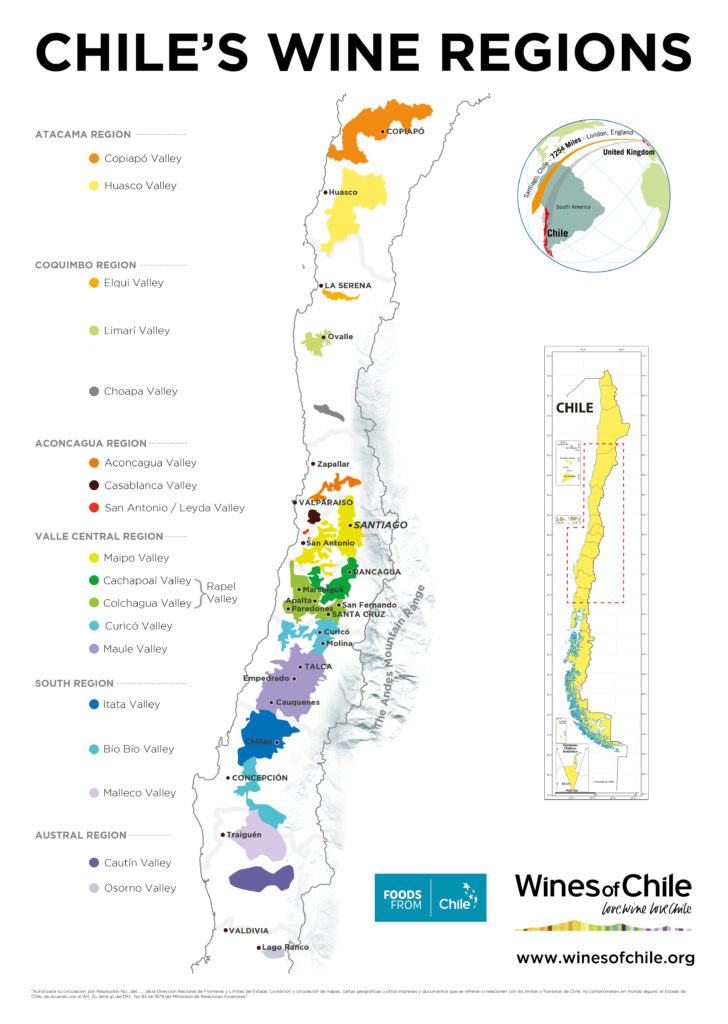
LG: Have you made any exciting discoveries?
DN: We found seven hectares of Pais older than a hundred years and they are in proper condition, they just need a little bit of love and care and Christian’s good hands, he oversees all the vineyards. We started off with the rosé, that did extremely well, the Chenin got the most innovative wine from SA. It’s really how do we scale it from here. We’ve got access to a lot of superb old fruit and we have put in place long term contracts, we pay these guys three or four times what they will get and that gives stability and preserves the old vineyards. It’s much like what happened back in South Africa with the Swartland Revolution twenty years ago and you see there are a lot of young guys who are starting to move on similar projects now. It’s not a copy and paste anymore, they really express site and style.
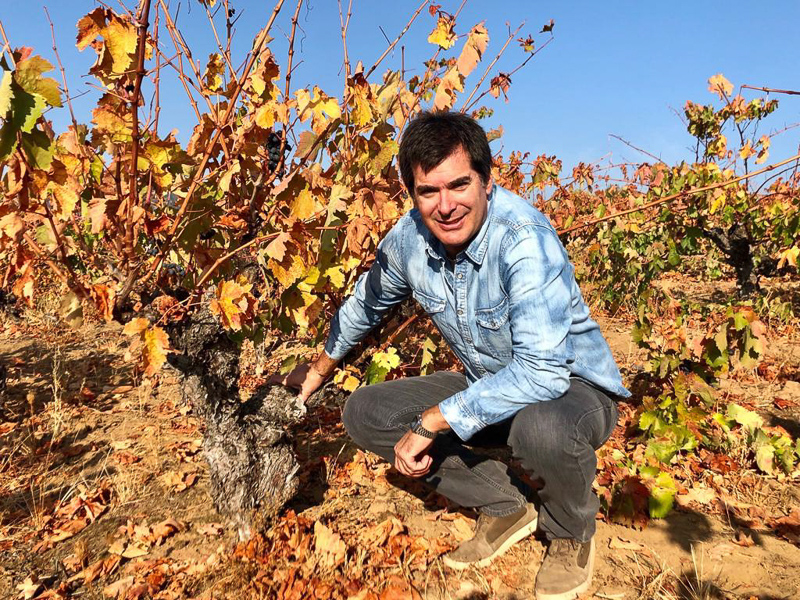
LG: Might you make Longavi in South Africa too?
The Glup Chenin and Grenache offer a really nice connection with South Africa. Julio loves Piekineerskloof. And we have this fantastic project there. We met this old guy and he wanted to pull out 120 hectares of old bush vine Chenin. The citrus industry is taking over in Robertson and Stellenbosch, all over there so guys pull out old vines all the time and start planting citrus. I convinced them not to do it and I offered to take all the fruit – I then thought, what the hell am I going to do with it! I can’t do anything in Cederberg or Ghost Corner as it’s not the same wine of origin.
I’ve now got a long term contract on these old vines so we plan to do a Cinsault and a Chenin from Swartland and then Grenache from Piekeneerskloof and then the first Sauvignon Gris from Cederberg. Sauvignon Gris was actually introduced to Chile in 1904 by the Bouchon family and their original Sauvignon Gris block is still planted, it’s on the Casa Silva property which the Bouchon family used to own. So that’s a wonderful link with South Africa too. That’s four phenomenal wines on the horizon.
We’ve got a South African Longavi now as well. Quite similar, a little bit more modern and we bottled a second Chenin today from an ancient Swartland vineyard. Not at crazy prices. We don’t try to push the prices; it’s called Black Summer Chenin. When you see how things have progressed its’ very exciting and I love every minute of it.
THE WINES
Jamie Goode (JG) tasted the following bottles.
Longaví Reforma Rosé 2017 Maule, Chile
12.5% alcohol, with a crazy low pH from 0.5 hectares of old País vines recently grafted over to Grenache. It spends four years in barrel, with the first year under flor, the next two years with the barrels were kept with ullage to allow controlled oxidation, and then for the last year the barrels were topped up. No added sulfites until bottling. Orange/pink in colour. This has a wonderfully expressive nose combining sweet and sour cherry and pear fruit with a touch of plum, and then some savoury, spicy notes adding interest, as well as a touch of aniseed. The palate is complex and lively with good acidity underpinning bright strawberry and cherry fruit with some complex mandarin and orange peel notes (Cointreau), a touch of marmalade, and some lovely crystalline citrus notes and then some tangy saltiness on the finish. Quite profound, offering fruit, but also a lot of savoury interest, too. One of the most remarkable rosés I’ve tried, with a lovely dry sour twist on the finish. 95/100 (JG)
Longaví Cementario Chenin Blanc 2020 Maule, Chile
13.5% alcohol, pH 3.05. From 1.2 hectares of Chenin Blanc recently top-grafted onto old País vines. Fermented in old barrel and aged for 12 months. Wild yeast, no added sulfites before bottling, no filtration. This is a complex, textured, layered expression of Chenin Blanc, with trademark good acidity supporting ripe pear, lemon and apple fruit, as well as subtle notes of vanilla and hay. The nose shows grapefruit, honey and some candied lemon, as well as some tangerine, and then there’s a real volume and depth on the palate, which is rounded and intense, with lovely fruit expression. Such breadth and interest here: it tastes really refined, with some finely spiced warmth on the finish. Quite beautiful. 94/100 (JG)
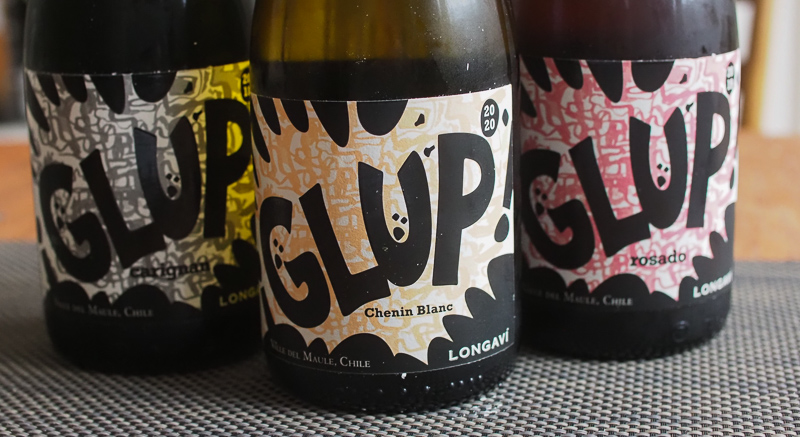
Glup Chenin Blanc 2020 Maule, Chile
13% alcohol. Fermented on skins then left on the skins for two months. From five vineyards in the Maule Valley. This has a complex reductive nose with some weedy hints as well as some mineral notes. The palate is lively and mineral with a bold citrus character as well as a touch of pear and apple richness. Finishes bright with good acidity, and a lovely tapering spiciness. 92/100 (JG)
Glup Naranjo 2019 Itata, Chile
12.5% alcohol. Moscatel, dry grown bush vines, fermented on skins in amphora then pressed and goes back to amphora for 12 months. Really perfumed on the nose, with pear, table grape and green tea notes. Lovely rich, sweetly fruited palate with table grape and apple notes and a fine spiciness. There’s a lovely depth here, and a bit of bass under the treble notes. 93/100 (JG)
Glup Rosado 2019 Maule, Chile
12.5% alcohol. Grenache, Mourvedre and Pais from dry-farmed bush vines, pH 3.05. Fermented in stainless steel at low temperature and aged in old French oak barrels. Lovely texture: this has cherries and strawberries with a touch of pear and some almond character. This is really lively and interesting with lovely focus and texture: there’s a nice contrast between the sweet fruit and high acidity. 91/100 (JG)
Glup Carignan 2018 Maule, Chile
13.5% alcohol. Wild yeast ferment in concrete tanks, then aged in small oak for 12 months. Interesting nose that’s smoky and spicy, with sweet, chocolatey black cherry and blackberry fruit. The palate has interesting reduction with a spicy twist. Lovely cherry fruit with a bit of spiciness and a touch of almond. Detailed and interesting with a spicy edge. 92/100 (JG)
Find these wines with wine-searcher.com


